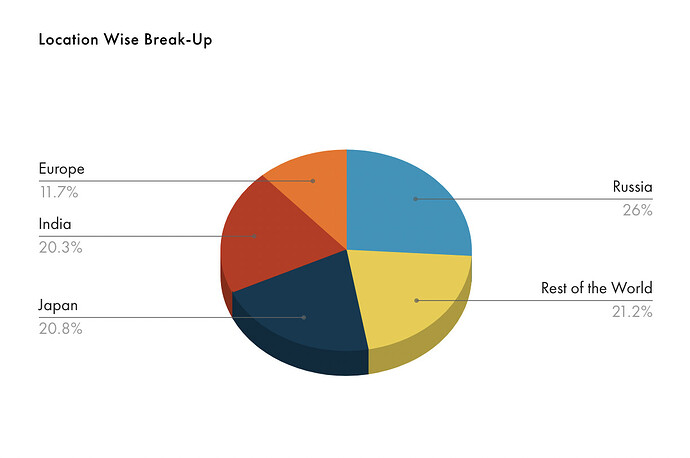Results – Q3 FY’24
Summary:
Revenue – Rs 153 Cr
Net profit – Rs 12 Cr
OPM – 13%
Overall, the results are disappointing to most. The stock has already corrected 20% after the results came out. But this post will try and dig a bit deeper. With the limited knowledge we have about the breakdown, let’s try and look between the lines.
Let’s start with the geographical split:
Russia is their biggest importer. Followed by Japan and the domestic market in India.
What’s happening in Russia?
The egg prices are sky high. Egg farmers claim that the industry is in “a perfect storm” with prices soaring to over 40% this year.
Russian egg imports will be exempt from the import duty for the first 6 months of 2024, the economy development ministry has decided. Authorities expect that imports from ‘friendly’ countries could help return the balance to the market. The price hike has happened due to a perfect storm in the Russian egg industry, Leonid Kkolod, an independent agricultural analyst, told the local press. Over the past 2 years, Russian egg farms have been silently suffering having to maintain operations with ‘negative profitability’. Among the reasons that pushed the profitability into the red zone, tough import dependence is the first to blame.
Source: poultryworld
Is the situation going to change? Yes! It looks like the the demand for eggs in Russia will primarily be met by India. More specifically, we also need to look into Egg powder imports. Are they going to increase as well?
Russia would commence the import of egg powder from India about a month from now (or perhaps sooner), owing to the increase in the demand for it. Rosselkhoznadzor, Russia’s agricultural watchdog, confirmed the development. The Russian media has, in fact, criticised the decision to open the market to Indian imports, stating that the local makers wouldn’t be able to compete with Indian prices and could be wiped out. Nevertheless, Rosselkhoznador has decided to go ahead with it.
Similarly, Japan’s primary egg exporter is also India, and their economy is also recovering with their stock market hitting a 34-year high. This is all positive news for Indian exporters.
Domestic demand for egg powder:
The Indian Egg powder market is forecasted to grow at a 7.1% CAGR through to 2029. Again, egg prices have risen sharply in India. I’m from Bangalore and an egg cost me Rs 6.5 from my local grocery shop. A sharp rise in egg prices is seen in the country due to the decline in production. Good export demand is aiding the uptrend in price, which producers said is likely to hold on to current levels till February.
So what is SKM doing with all this demand?
Stocking up inventory! The advantage about egg powder, unlike eggs, is its longer shelf life. SKM’s recent results clearly points to the fact that the drop in OPM% margins is primarily due to stocking up of inventory:
The expense related to changes in inventories of finished goods increased from -18.3Cr from last year to -3.47Cr this year. This suggests that the company is investing more in its inventory of finished goods during the current quarter compared to the same period last year. Meaning the value of the inventory is going up. Again, I’m not a financial expert and would like it if someone can analyze it further for me. So that explains the drop in OPM% and net profits.
Please do share your thoughts ![]()
| Subscribe To Our Free Newsletter |



